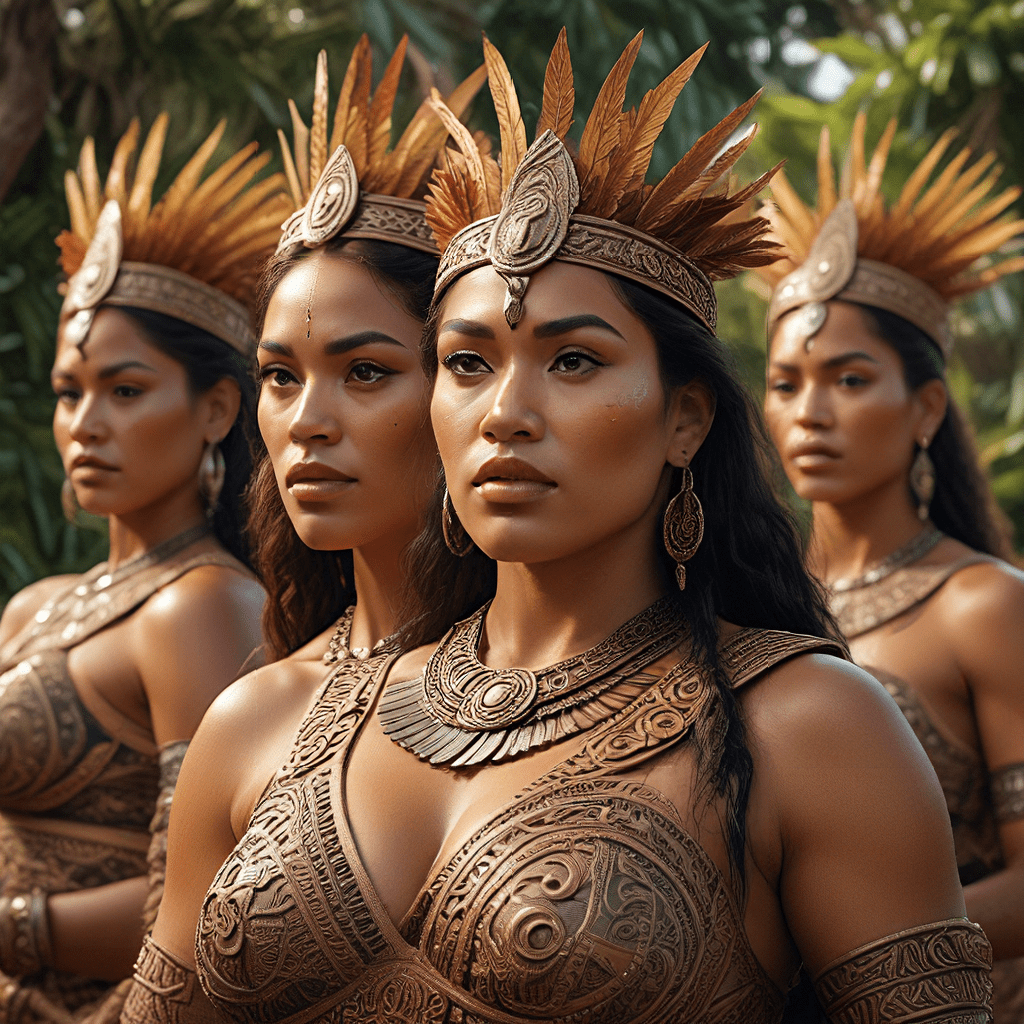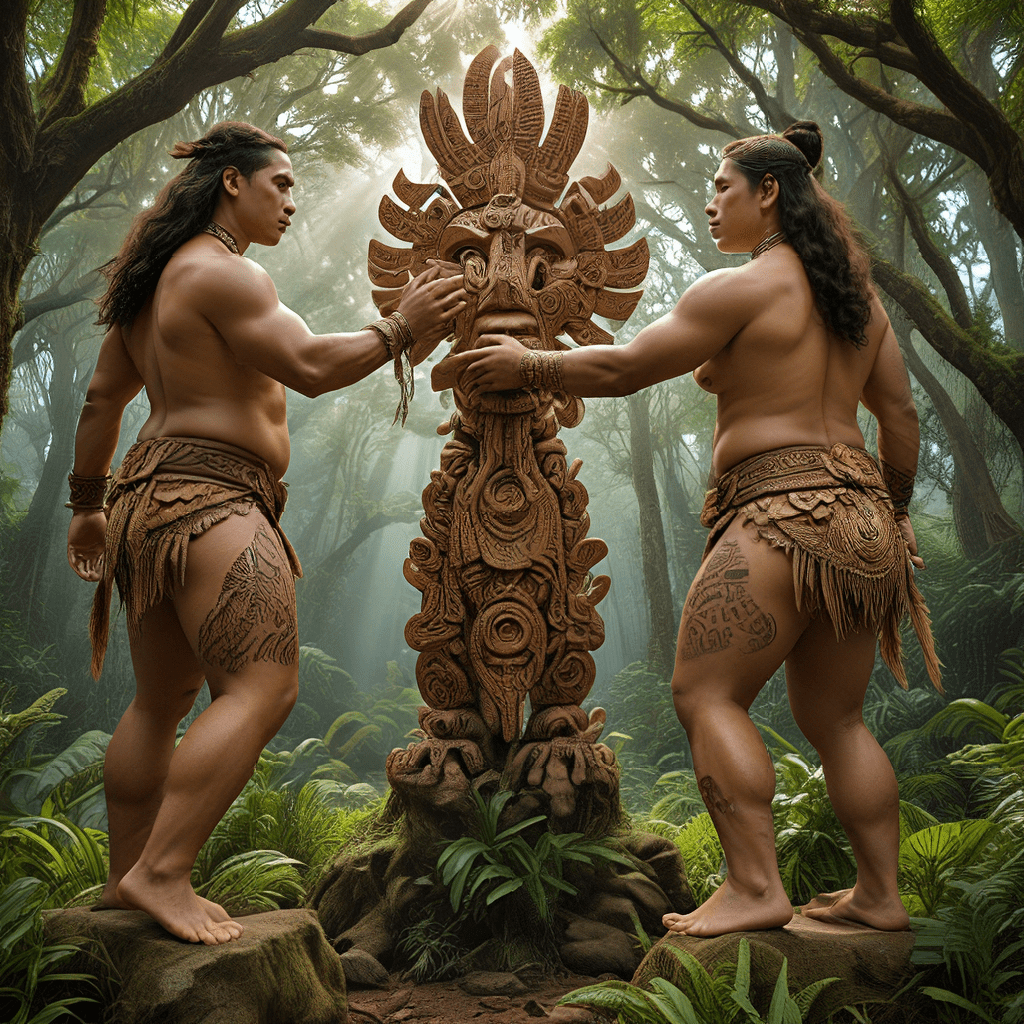The Significance of Women in Maori Mythology
Maori mythology, a rich tapestry of stories passed down through generations, places women at the heart of creation, knowledge, and spiritual power. These narratives, interwoven with ancestral lineages, natural phenomena, and spiritual realms, showcase women as integral figures in the Maori worldview. They are not merely passive bystanders but active participants in shaping the world and guiding its inhabitants.
Creation Myths and the Role of Women
Maori creation myths, such as the story of Rangi and Papa, the sky father and earth mother, highlight the fundamental role of women in bringing forth life. Papa, embodying the earth, is depicted as a nurturing and fertile force, giving birth to the gods and goddesses who populate the Maori pantheon. This story emphasizes the importance of feminine energy in the creation of the universe and the subsequent birth of all living beings. The role of women as originators of life and the very foundation of existence is a recurring theme in Maori mythology.
Women as Guardians of Knowledge and Tradition
Beyond creation, women play a vital role in preserving and transmitting knowledge across generations. In traditional Maori society, women were entrusted with the responsibility of teaching children about their culture, history, and spiritual practices. They were the keepers of oral traditions, songs, and rituals, ensuring the continuity of Maori cultural heritage. This role of knowledge-bearers extended to areas like medicinal practices, food gathering techniques, and celestial navigation. Women were often seen as the repositories of wisdom, their insight and understanding passed down through generations.
Women as Powerful Figures in the Natural World
Maori mythology recognizes the deep connection between women and the natural world. Many female deities are associated with specific aspects of nature, showcasing their influence over the elements. For example, Hine-nui-te-po, the goddess of death and the underworld, represents the cycle of life and death, while Hine-moana, the goddess of the ocean, embodies the vastness and power of the sea.
The Power of Female Ancestors and Deities
The importance of female ancestors is woven into the fabric of Maori cultural identity. These figures, often portrayed as powerful deities, are revered for their wisdom, strength, and influence on the natural world. For example, Rongomai, the goddess of agriculture, is revered for her role in bringing prosperity and abundance to the land, while Tane Mahuta, the god of the forest, is often depicted as collaborating with his mother, Papa, in shaping the natural world. These female ancestors serve as models for succeeding generations, demonstrating the potential for women to wield power and influence in all aspects of life.
The Importance of Matrilineal Descent in Maori Society
Maori society traditionally followed a matrilineal descent system, where lineage and inheritance were traced through the mother's line. This system emphasized the importance of women in maintaining family connections and preserving cultural heritage. Daughters inherited land, status, and knowledge from their mothers, ensuring the continuity of family lines and the transmission of important traditions. The prominence of matrilineal descent, a feature of many indigenous cultures worldwide, highlights the central role of women in shaping Maori social structures and cultural practices.
Women as Shapeshifters and Guardians of the Spiritual Realm
Maori mythology often portrays women as powerful shapeshifters, capable of transforming into animals or spirits. This ability represents their connection to the spiritual realm and their ability to navigate between the physical and the mystical. For example, Hine-titama, the goddess of the night sky and stars, is known for her shape-shifting abilities, while Rona, the goddess of fire, is said to have the power to transform into a bird. These depictions demonstrate the fluidity and transformative nature of women's power in the spiritual realm, showcasing their ability to act as mediators between the seen and the unseen.
The Portrayal of Women in Maori Myths: Heroes and Villains
Maori myths, like many mythologies around the world, feature a diverse range of female characters, including both heroines and villains. These characters serve as compelling examples of the complexities of human nature and the multifaceted role of women in society. While some women, like Hina, the goddess of the moon, are revered for their wisdom and compassion, others, like Maui's sister, are depicted as cunning and manipulative. These diverse portrayals reflect the reality of human experience, showcasing the spectrum of emotions, motivations, and actions that characterize both men and women.
Theories on the Evolution of Female Roles in Maori Mythology
Over time, the role of women in Maori mythology has evolved, reflecting changes in social structures and cultural practices. While traditional myths often emphasize the power and influence of women, later stories may reflect the impact of colonization and the introduction of new values and beliefs. Some scholars suggest that the emphasis on female deities and ancestors may have been influenced by the matrilineal system, while others argue that these stories reflect a more egalitarian view of gender roles. Exploring the evolution of female characters in Maori mythology provides insights into the changing perspectives and values of Maori society over time.
The Contemporary Relevance of Female Figures in Maori Mythology
In the present day, Maori women continue to draw inspiration from the powerful female figures in their mythology. These stories provide a rich source of knowledge, wisdom, and resilience, offering role models for contemporary women seeking to navigate the challenges and opportunities of the modern world. Maori mythology encourages women to embrace their strength, creativity, and spiritual connection to the natural world, empowering them to be leaders, innovators, and protectors of their cultural heritage. The enduring legacy of these female figures serves as a reminder of the vital role women play in Maori society and the importance of celebrating their contributions to the rich tapestry of Maori culture.
FAQ
Q: What is the most common role of women in Maori mythology?
A: Women are often depicted as creators, keepers of knowledge, and powerful figures in the natural world.
Q: Who are some prominent female figures in Maori mythology?
A: Hine-nui-te-po, Hine-moana, Rongomai, and Tane Mahuta's mother, Papa, are some examples.
Q: How does Maori mythology reflect the matrilineal system?
A: The emphasis on female ancestors and the inheritance of land and status through the mother's line are key features of this system.
Q: Why is it important to study female figures in Maori mythology today?
A: These stories offer valuable insights into Maori cultural values and empower women in the present day.



